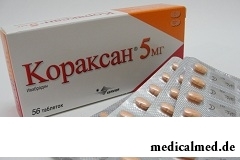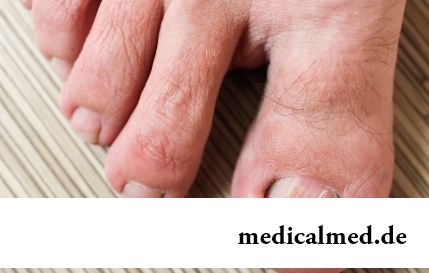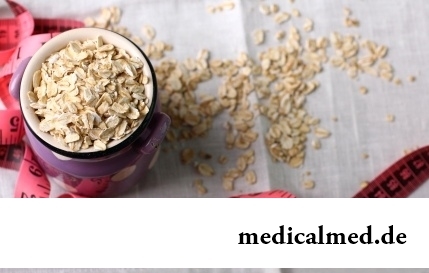





Koraksan
Application instruction:
 Koraksan – anti-anginal drug, the selection inhibitor of If-channels of a sinus node.
Koraksan – anti-anginal drug, the selection inhibitor of If-channels of a sinus node.
Form of release and structure
Dosage form – tablets, film coated: salmoncolored color, have an engraving, on one party – a logo of firm, on another – at tablets of an oval biconvex form with notches from two lateral faces – figure 5, at triangular tablets – number 7,5 (on 14 pieces in blisters, in a cardboard pack 1, 2 or 4 blisters).
Active ingredient – an ivabradina a hydrochloride:
- 1 tablet of an oval form – 5,39 mg that is equivalent to 5 mg of an ivabradin;
- 1 tablet of triangular shape – 8,085 mg that is equivalent to 7,5 mg of an ivabradin.
Auxiliary components: magnesium stearate, lactoses monohydrate, starch corn, silicon dioxide colloid anhydrous, maltodextrin.
Structure of a film cover: gipromelloza, глицерол, dye ferrous oxide yellow (E172), macrogoal 6000, titanium dioxide (E171), dye ferrous oxide red (E172), magnesium stearate.
Indications to use
Koraksan's use is shown at therapy of stable stenocardia at patients with a normal sinoatrial rate:
- Existence of contraindications to beta adrenoblockers or at their intolerance;
- Inadequate control of stable stenocardia at optimum doses of beta adrenoblockers, for a combination with beta adrenoblockers.
Besides, drug is appointed at chronic heart failure at patients with the heart rate (HR) of 70 and more beats per minute and a sinoatrial rate for the purpose of reduction of frequency of development of possible cardiovascular complications.
Contraindications
- Sinuatrial blockade;
- Bradycardia, at ChSS at rest less than 60 beats per minute;
- Acute myocardial infarction;
- Unstable stenocardia;
- Cardiogenic shock;
- Heavy arterial hypotension (the systolic arterial pressure (AP) below 90 mm of a mercury column (hg) and diastolic is lower than the ABP 50 mm hg);
- Sick Sinus Syndrome (SSS);
- Acute or unstable heart failure;
- Atrioventricular block (AV blockade) of the III degree;
- Continuous stimulation by an artificial pacemaker of heart;
- Concomitant use of strong inhibitors of isoenzymes of system of P450 3A4 cytochrome, such, as нефазодон, antibiotics of group of macroleads (телитромицин, кларитромицин, джозамицин, peroral erythromycin), antifungal drugs of group of azoles (итраконазол, кетоконазол), HIV protease inhibitors (ритонавир, нелфинавир);
- The expressed liver failure (on a scale of Chayld-Pyyu more than 9 points);
- Glucose galactose sprue, lactose intolerance, deficit of lactase;
- Period of pregnancy and breastfeeding;
- Age up to 18 years;
- Hypersensitivity to drug components.
Drug is contraindicated to the women of reproductive age who are not applying well-tried remedies of contraception.
With care Koraksan sick with arterial hypotension, AV blockade of the II degree, chronic heart failure of the IV class (NYHA classification), a moderate form of the liver failure expressed by a renal failure (is recommended to appoint at the clearance of creatinine (CC) less than 15 ml/min.), inborn lengthening of an interval of QT, recently had stroke, a pigmental degeneration of a retina.
Under careful medical control it is necessary to accept drug at a combination to moderate inhibitors and inductors of isoenzymes CYP3A4, medicines extending QT interval, grapefruit juice, blockers of the slow calcium channels reducing ChSS (diltiazem, verapamil), nekaliysberegayushchy diuretics.
Route of administration and dosage
Pill is taken inside, during food, 2 times a day (in the morning and in the evening).
At stable stenocardia the initial daily dose makes 10 mg (on 1 tablet of 5 mg in the morning and in the evening). On the basis of clinical indications, in 3-4 weeks of reception the daily dose can be brought to 15 mg. In case of decrease in ChSS at rest to less than 50 beats per minute or emergence of symptoms of bradycardia (dizziness, strong decrease in the ABP, increased fatigue), the daily dose of drug needs to be lowered to 5 mg. In the absence of therapeutic effect after a dose decline use of drug should be cancelled.
At chronic heart failure the recommended initial daily dose – 10 mg. In 2 weeks of use if ChSS at rest keeps stability at the level of more than 60 beats per minute, the dose can be raised to 15 mg.
Correction of a daily dose of Koraksan depends on stability at the patient of ChSS at rest:
- 50 beats per minute and less – 5 mg (against the background of emergence of symptoms of bradycardia);
- From 50 to 60 beats per minute – 10 mg;
- It is higher than 60 beats per minute – 15 mg.
If ChSS of 50 beats per minute and less or bradycardia symptoms at the patient remain, it is necessary to consider a question of drug withdrawal.
To patients at the age of 75 years the recommended initial daily dose is also more senior makes 5 mg, its perhaps further increase.
Patients with an impaired renal function (KK more than 15 ml/min.) are recommended to appoint an initial daily dose of 10 mg, in case of therapeutic effect its increase up to 15 mg is possible in 3-4 weeks of administration of drug.
Correction of the usual recommended dosing is not required to patients with easy degree of a liver failure (to 7 points on a scale of Chayld-Pyyu).
At the expressed renal failure and moderate degree of a liver failure it is recommended to appoint drug with care.
Side effects
Koraksan's use can cause side effects:
- From cardiovascular system: often – bradycardia; infrequently – supraventricular premature ventricular contraction, a heart consciousness; very seldom – SSSU, fibrillation of auricles, AV blockade of II and III degrees; frequency is unknown – the expressed decrease in the ABP (it can be connected with bradycardia);
- From sense bodys: very often – changes a svetovospriyatiya (photopsia); often – a sight illegibility; infrequently – вертиго; frequency is unknown – a vision disorder, a diplopia;
- From the alimentary system: infrequently – nausea, diarrhea or a lock;
- From respiratory system: infrequently – an asthma;
- From a nervous system: often – a headache (especially the first 4 weeks of therapy), dizziness; frequency is unknown – a syncope;
- From a musculoskeletal system: infrequently – spasms of muscles;
- From integuments and a hypodermic fatty tissue: frequency is unknown – an itch, skin rash, an erythema, a small tortoiseshell, a Quincke's disease;
- From laboratory and tool indicators: infrequently – an eosinophilia, a hyperuricemia, lengthening of an interval of QT on the electrocardiogram (ECG), increase in level of concentration of creatinine in blood;
- General frustration: frequency is unknown – increased fatigue, an adynamy, an indisposition.
The most often undesirable effects of reception of an ivabradin have dozozavisimy character and are connected with the mechanism of clinical effect of drug.
Special instructions
Koraksan has no clinical effect at treatment or prevention of arrhythmias, against the background of supraventricular or ventricular tachycardia its effect falls.
Purpose of an ivabradin is not recommended to patients with fibrillation of auricles (ciliary arrhythmia) and other types of arrhythmias, caused by dysfunction of a sinus node.
The patients with chronic heart failure accepting drug and patients with other diseases – against the background of simultaneous use with Amiodaronum or antiarrhytmic drugs I of a class are more subject to risk of development of fibrillation of auricles. Use of drug for patients with disturbances of intra ventricular conductivity (blockade of the left or right leg of a ventriculonector), chronic heart failure and a ventricular dissinkhroniya has to take place under fixed control of the doctor.
At bradycardia with ChSS at rest less than 60 beats per minute, and directly after a stroke purpose of drug is contraindicated to unstable heart failure.
At emergence of disturbances of visual functions, it is necessary to consult with the doctor.
In need of purpose of drug the patient with an inborn syndrome of the extended QT interval treatment has to take place under strict control of an ECG.
At patients with fibrillation of auricles the risk of development of the expressed bradycardia at pharmacological cardioversion of recovery of a sinoatrial rate is not confirmed. In 24 hours prior to carrying out planned electric cardioversion it is necessary to stop Koraksan's reception.
Change of hypotensive therapy at chronic heart failure at the patients accepting Koraksan has to take place under monitoring of the ABP.
Drug does not exert impact on ability of the patient to control of vehicles and mechanisms, however, it is necessary to consider a possible vision disorder in the form of temporary change a svetovospriyatiya and to be careful during sharp change of intensity of light, preferential at night.
Medicinal interaction
Combinations with inductors and inhibitors of an isoenzyme CYP3A4 as they cause decrease and increase (according to) the level of concentration of an ivabradin in a blood plasma are not recommended.
Koraksan's combination to strong inhibitors of an isoenzyme CYP3A4 as they can cause increase in average concentration of an ivabradin in a blood plasma by 7-8 times is contraindicated.
The accompanying purpose of a flukonazol and other moderate inhibitors of an isoenzyme CYP3A4 is possible if ChSS at rest exceeds 60 beats per minute. The initial dose of drug is recommended of 5 mg a day, treatment needs to be accompanied with control of ChSS.
Additional lengthening of an interval of QT causes a combination of an ivabradin to Disopyramidum, quinidine, bepridily, ibutilidy, sotaloly, Amiodaronum and other antiaritmika; ziprazidony, Pimozidum, sertindoly, tsizapridy, galofantriny, pentamidine, meflokhiny, erythromycin (at intravenous administration). Treatment in this combination needs to be carried out under careful and regular control of an ECG.
Increase in risk of development of arrhythmia can be promoted by a hypopotassemia therefore with care it is necessary to appoint drug at a concomitant use of nekaliysberegayushchy diuretics (loopback and thiazide diuretics).
Combined use of rifampicin, barbiturates, Phenytoinums, the vegetable means including a St. John's Wort of the made a hole or other inductors of an isoenzyme CYP3A4 can reduce concentration and action of an ivabradin.
There is no clinically significant influence on pharmacokinetics and a pharmacodynamics of drug from a combination to warfarin, digoxin, inhibitors of a protonew pomp (лансопразол, омепразол), GMG-KOA-reduktazy inhibitors (симвастатин), FDE5 inhibitors (sildenafit), blockers of slow calcium channels derivatives of a dihydropyridinic row (лацидипин, амлодипин).
Koraksan does not influence pharmacokinetics of an amlodipin, warfarin, digoxin, a simvastatin, latsidipin and a pharmacodynamics of warfarin, digoxin, acetylsalicylic acid.
Grapefruit juice increases concentration of an ivabradin in a blood plasma twice therefore during treatment it is recommended to avoid its use.
Use of drug in a combination with antagonists of receptors of angiotensin II, APF inhibitors, beta adrenoblockers, antagonists of Aldosteronum, diuretics, nitrates of the prolonged and short action, a fibratama, GMG-KOA-reduktazy inhibitors, inhibitors of a proton pomp, hypoglycemic means for intake, antiagregantny drugs is shown.
Terms and storage conditions
To store at the room temperature. To protect from children.
Period of validity – 3 years.
Name of drug
Price
Drugstore
Koraksan тбл п/пл/о 5 mg No. 56, Servier/Serdiks of Ltd company
1134 rub.
 Network of the Moscow drugstores of IFC
Network of the Moscow drugstores of IFCKoraksan тбл п / about 7.5mg No. 56 *, Servier/Serdiks of Ltd company
1194 rub.
 Network of the Moscow drugstores of IFC
Network of the Moscow drugstores of IFCAverage life expectancy of lefthanders is less, than right-handed persons.

Diapers for adults – individual one-time means of hygiene which in some situations is irreplaceable, and from such situats...
Section: Articles about health
Wood louse – the ordinary-looking unpretentious plant extended in all territory of our country. It quickly expands, and sometimes fills sites, bringing a lot of chagrin to gardeners. Perhaps, they would be upset less if knew that the wood louse is the prices...
Section: Articles about health
The word "onikhokriptoz" is unfamiliar to most of people, meanwhile quite so physicians call very widespread problem: the growing of edge of a nail into surrounding fabrics causing inflammatory process. Usually the illness affects thumbs of legs, and is followed by reddening, hypostasis, and in the started cases – release of pus. Patients complain of the pain amplifying when walking, problems with the choice of footwear....
Section: Articles about health
All got used long ago that, having addressed the plastic surgeon, it is possible to modify natural parameters of a figure or to reduce...
Section: Articles about health
It would seem, about it there can be no disagreements: water is necessary for a human body for normal life activity, and about how and when it should be drunk, all know. It turned out that the situation is not absolutely so: for many years occur ве...
Section: Articles about health
Summer in the heat. Many are going to spend vacation abroad. Travelers the tender seas, rest on beaches wait, for sightseeing, campaigns on natural and cultural reserves. But, unfortunately, on vacation also problems with health can wait for us. On a foreign trip it is possible to face also diseases which not only will spoil long-awaited issue, but also will force to be treated within long months after its termination. To be insured completely from troubles of it a sort...
Section: Articles about health
You are office worker, the driver, the fan of winter sports or do not think of life without bicycle? You conduct a slow-moving image жизн...
Section: Articles about health
Long time antibiotics were considered as a panacea from all diseases and were appointed even at insignificant symptoms of an infection. Even now not everyone knows in what force of antibiotics how and when they should be accepted. Let's discredit 7 popular myths about such drugs...
Section: Articles about health
Work of a brain is extremely complex and in many respects is not studied yet. It is confirmed also by the features of thought processes which are shown when the person sleeps. Let's tell about some of them....
Section: Articles about health
Neurosis is called pathology of a nervous system at which deviations in functioning of the highest nervous processes are observed. Nye...
Section: Articles about health
The pancreas performs two functions in a human body: release of enzymes without which digestion of carbohydrates, fats and proteins, and a producing hormones is impossible. The most important of them - insulin, is the main participant of carbohydrate metabolism, a normal...
Section: Articles about health
Coffee - the tonic loved by many for the invigorating aroma and deep taste. Having the stimulating effect, coffee increases working capacity, promotes concentration of attention, fights against drowsiness and improves mood. Statistically, about 30% of inhabitants of the planet regularly use coffee, from them more than 8% are "coffee-achievers" - the persons using more than 3 cups of drink a day....
Section: Articles about health
It is pleasant to state a possibility of improvement of quality of life of people with problems of functioning of secretory system. By efforts that...
Section: Articles about health
Zone hypostases under eyes - very widespread problem giving to people is a lot of inconvenience. Hypodermic fabric in these parts has very loose structure and almost does not contain collagenic fibers. Besides, the skin covering подглазья constantly is exposed...
Section: Articles about health
Dietary supplements (dietary supplements) for the last decades were so thoroughly included into our life that, apparently, it is already impossible to find the person who at least once did not try them. At the same time, most of our compatriots have a vague idea of what dietary supplements as they affect a human body consist of and what differ from the real medicines in. Let's try to understand these questions, and at the same time and to understand, such additives are how necessary for us....
Section: Articles about health
It is possible to find the extensive range of fruit and vegetables in modern shops. Russians already got used that on counters in any...
Section: Articles about health
The kid who was recently born is surrounded with love of adult family members and their cares without which the baby cannot exist. Some parents consider that gentle attachment and caress are quite enough that the child correctly developed and was happy...
Section: Articles about health
Among a set of the perfumery and cosmetic goods which are released today the special group is made by the means containing antibacterial components. Such types of gels, shampoos, soaps, creams, lotions and other products are positioned by manufacturers as a panacea from all diseases caused by pathogenic microorganisms. The unlimited and uncontrolled use of similar means becomes result of trustfulness of the buyers hypnotized by persuasive advertizing sometimes. Many spetsial...
Section: Articles about health
Epilepsy is one of widespread neurologic diseases. To parents, whose children suffer from this illness, it is necessary...
Section: Articles about health
The fatigue, sleep debt, disturbances of food, bad mood, vagaries of the weather – all these circumstances badly affect our appearance. Especially the person suffers: skin becomes flabby, loses healthy color, becomes covered by wrinkles, zones of hypostases and t appear...
Section: Articles about health
Each of us repeatedly noticed that the people having the same passport age are sometimes not similar on one-years at all. One at the age of 40-45 years already looks almost an old man, and another and in 60 is young, vigorous and full of life. The matter is that the condition of our health depends not on the number of the lived years, and on degree of safety of an organism. This factor also defines biological age of the person....
Section: Articles about health
Not everyone can brag of the shining Hollywood smile. Even at the person who is regularly visiting the stomatologist and watching з...
Section: Articles about health
Antibiotics - - it is possible to call the chemical compounds suppressing growth of bacteria the break in the field of medicine which allowed to save mankind from many diseases incurable earlier: tuberculosis, plague, syphilis and many others. A contribution of drugs to rescue of people from...
Section: Articles about health
All of us, unfortunately, should face flu nearly an every year. It would seem, so frequent disease has to be studied already up and down, and each person, at least once to them had (and the number of such people in our country aims at 100%), has to know the basic rules of its treatment. However as shows experience of doctors, there is no it, and often people, self-confidently thinking what is known as it is necessary to be treated, make mistakes....
Section: Articles about health
The list of stereotypes of which, apparently, all know strongly includes following: British surely eat for breakfast овсянк...
Section: Articles about health
Color of plants is caused by presence at them of certain chemical compounds. Let's talk about what is meant by various colors of vegetables and fruit and what properties they give them....
Section: Articles about health
Radiological methods of a research are applied in medicine more than hundred years, and thanks to them millions of lives were saved. In many cases without X-ray it is impossible to make exact idea of a condition of bodies and fabrics, it is correct to make the diagnosis. Nevertheless, many myths about researches such continue to exist. Let's consider the most widespread of them....
Section: Articles about health

